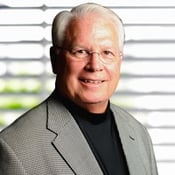Today we’re sharing insight from guest blogger, Rick Nichols, Managing Partner of TechCXO's Sales & Marketing Practice. We hope you enjoy Rick’s wisdom and perspective.
 We define corporate culture as a shared pattern of values, beliefs, and expectations. These values produce rules for behavior and pressure to conform on the job. Tom Peters’ timeless book In Search of Excellence tells us that “excellent companies are marked by very strong cultures, so strong that you either buy into their norms or get out. There’s no halfway house for most people in excellent companies.”
We define corporate culture as a shared pattern of values, beliefs, and expectations. These values produce rules for behavior and pressure to conform on the job. Tom Peters’ timeless book In Search of Excellence tells us that “excellent companies are marked by very strong cultures, so strong that you either buy into their norms or get out. There’s no halfway house for most people in excellent companies.”
Fortune magazine pointed out in an article several years ago that it may be easier to change a company’s people than to change its culture. In the long term, the key to culture is whom you hire and promote. People often get jobs and move up more based on the degree to which they fit prevailing cultural norms than for any objective reason. For hiring leaders who must interview and hire candidates from outside the company or industry, this carries very important implications. We need to know if candidates will fit into our culture.
Focus On Culture When Hiring
Despite the emphasis of today’s business press on corporate culture, its impact on the people you hire too often gets overlooked. It is important for leaders to understand our culture, but not to convey it through the questions you ask.
Interviewers who never get far beyond the resume factor may credit 10 years of experience in one industry or company as evidence that the person can succeed in yours. There may be a basis for this conclusion because the industry experience was gained in a very different work culture.
Culture and candidate must fit. The techniques and skills in behavioral interviewing will provide a method for interviewing candidates that will ensure the best possible fit. When consider the critical match of candidates to culture, you can apply a basic principle to all interviewing: The hiring process really boils down to fitting people against jobs. To fit people against jobs in a way that considers a candidate’s fit with your culture, you need to predetermine the behaviors required to succeed on the job.
Culture is determined by the how of each job. Most job descriptions only tell the what is required, what is paid, what the benefits are, what the reporting structure is, or what skills are required.
Today’s candidates have been coached in ways to identify and use corporate culture in their interviews. We must be prepared to do the same.
Create A Coaching And Mentoring Culture
The key in developing a world class, high performance culture is in creating an atmosphere of sourcing, hiring, effectively onboarding while effectively coaching and mentoring the team. In accomplishing this, a critical mindset and skill is in teaching people critical thinking and decision-making skills.
Human nature is that people like to delegate upward. Much like parents, we as managers and leaders love to provide all the answers, displaying all our life knowledge and domain expertise. The issue this creates is that, following the human law of least resistance, individuals stop thinking because it’s easier and quicker to just ask us for the answers. By doing this, they also have plausible deniability if something goes wrong.
Great leader/managers‘ egos are fed by the desire to develop the team. The mindset we have in following this model is to encourage independent critical thinking. This requires a bit more work on our part as take charge managers in that, while it is easier to just give the answer, we need to coach by asking open-ended high value questions which encourage critical thinking.
What’s The Risk?
The counter-intuitive aspect of developing a team is that we may create less certainty by letting our team make decisions, which may not either be perfect or the same ones we would make if we were merely telling the team or individual what to do. The benefit, though, is that over time individuals be-come more self-reliant and self-confident in the decisions they make, which leverages our time to lead and also prepares them for more senior roles with the organization.
This content was written and shared by guest blogger Rick Nichols and originally appeared on the TechCXO blog.
 Rick Nichols is Managing Partner of TechCXO's Sales & Marketing Practice and a member of the Executive Committee. He can be reached at rick.nichols@techcxo.com or view his full bio.
Rick Nichols is Managing Partner of TechCXO's Sales & Marketing Practice and a member of the Executive Committee. He can be reached at rick.nichols@techcxo.com or view his full bio.
Connect with Rick on LinkedIn and TechCXO on LinkedIn, Twitter, and Facebook.




